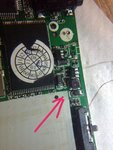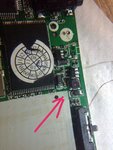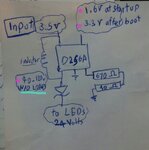jzeds1491
Junior Member level 1
Hi guys, this mp3 players lcd went black (dead led backlight) and I measured the voltage at connector and it was rated 24volts for 3 leds!,
I replaced 1 led and used another pin for it, it worked but the D256A ic gets really hot and shuts the device down after a couple of seconds. (even without my led connected), this also happens if I connect the charger.


thanks in advance
I replaced 1 led and used another pin for it, it worked but the D256A ic gets really hot and shuts the device down after a couple of seconds. (even without my led connected), this also happens if I connect the charger.


thanks in advance






